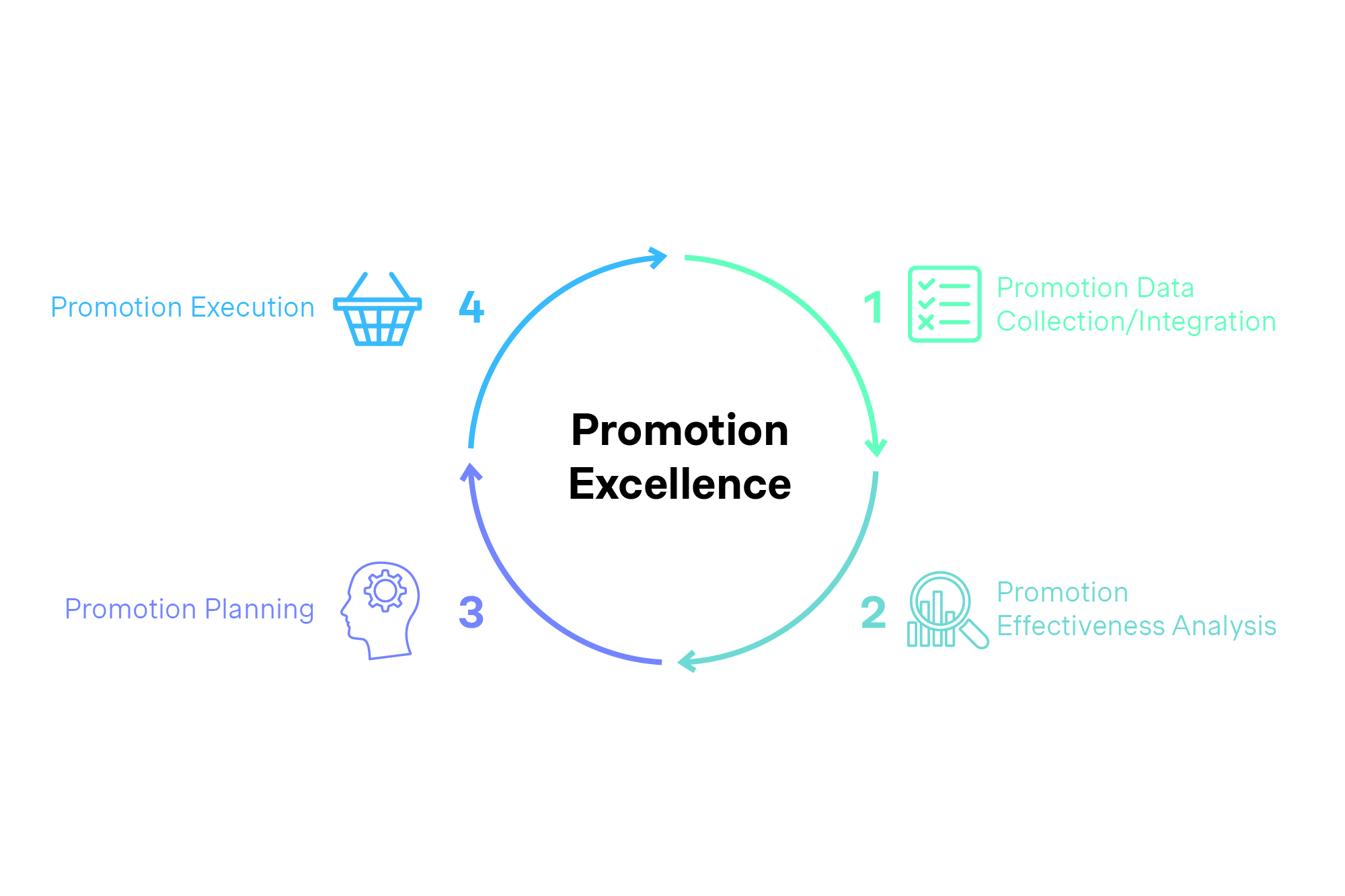Due to the ongoing global economic downturn, South Korea has experienced a deceleration in its economic growth, with the national GDP growth rate stagnating at 1.4% in 2023. According to projections by the Asian Development Bank (ADB), the country’s economic growth is forecast to reach 2.2% this year, less than half of the Asian average of 4.9%.
Conversely, consumer prices continue their upward trajectory, driven by factors such as sustained inflationary pressures and soaring raw material costs, compelling businesses to raise prices in quick succession.
To mitigate consumer dissatisfaction stemming from price hikes, a concerning trend has emerged wherein companies surreptitiously reduce product unit quantities or quality, a practice known as "shrinkflation" or "skimpflation". This phenomenon has led to a decline in consumer trust towards manufacturers.
In the face of such economic headwinds, how can Consumer Goods companies achieve profitable growth? Our recommendation is to prioritize three core areas for optimization.
I. Optimize pricing by focusing on the perceived value.
The pricing of consumer goods should always prioritize a consumer-centric approach. However, many companies, including some of the key market players, fail to fully reflect the consumer perspective and remain adherent to conventional pricing methodology (i.e., cost-plus).
According to the Bank of Korea, 47% of the corporates either do not review current prices or only do so in accordance with external stimuli (e.g., cost increases, competitor price adjustments). Such unjustified pricing without consideration of consumers' perceived value and willingness-to-pay carries high risks and uncertainties regarding its business impact.
Below are the two steps manufacturers must consider in transitioning to consumer-oriented pricing.
Step 1: Understand consumers' perceived price/value of your products
It is essential to identify the key value drivers influencing consumers' purchasing decisions and how consumers perceive your products' performance on those specified value drivers at the current price level. This enables Consumer Goods manufacturers to outline the overall direction of price adjustments by recognizing consumers’ key buying factors, perceptions of the company’s products, and competitive advantages/areas for improvement versus competitors.
Step 2: Identify price thresholds of consumers' WTP
Having understood the perceived value of the products, it is also important for companies to determine how much consumers are willing to spend on products with that perceived value with reference to price sensitivity. This process allows companies to identify price points where consumers’ purchase intent surges or falls, also known as the price threshold.
To reach a final pricing decision, it is important to incorporate qualitative factors like product role and brand positioning, with the primary focus on consumers' perceived value and willingness to pay.
II. Optimize promotion by integrating data-driven strategies.
Promotions and pricing are inextricably linked. Excessive promotional spending can erode margins and undermine a well-established price level.
The Korean market stands out as a highly promotion-driven one. In the personal care sector, based on our client and market analysis, around 50% of SKUs are offered at least one promotion per annum. However, questions remain whether promotions truly deliver profitable gains. Market research with analysis on over 10,000 promotions by Consumer Goods companies revealed that 46% of those promotions resulted in losses.
To allocate promotions optimally across the right products at the right times, it is imperative to employ a pioneering approach — secure and utilize internal/external data pertaining to promotional activities and maintain a management system to sustain its implementation.
The South Korean Consumer Goods companies continue to rely heavily on the past experience in promotion (e.g., discount rates/duration) planning and lack a standardized process to assess promotion effectiveness. We recommend the following four-step approach to achieve promotion excellence.

Step 1: Promotion data collection/integration
Start with centralized integration of sell-in/out data from past promotions for promotion analysis. Developing a promotion database helps to systematically capture and store all associated data with clear tagging conventions to categorize by promotion parameters. (e.g., promotion type, depth)
Step 2: Promotion effectiveness analysis
Evaluate promotion effectiveness/efficiency based on pre-defined KPIs (e.g., ROI, revenue, volume uplift) depending on the promotion objective. Leverage data-driven implications to reallocate the promotion budget and refine promotion guidelines.
Step 3: Promotion planning
Define a clear objective and related KPIs for each promotion event. Formulate detailed promotion plans/guidelines for attributes such as strategic product role, promotion performance, and seasonality. Perform upfront volume/margin forecast simulations incorporating discounts/incentives to pre-validate expected promotion impact.
Step 4: Promotion execution
Execute promotion based on established plans and monitor adherence to promotion guidelines across all channels/accounts for enhanced visibility.
III. Adopt pricing excellence by developing a robust pricing management system.
To fully benefit from the pricing excellence, companies need to expand the scope beyond a one-time or brand/product-specific initiative and make it a corporate-level practice. Globally leading companies are already taking on such practices to minimize unnecessary business losses and pursue long-term growth.
The importance of pricing has only recently gained attention in the Korean market, and most companies lack a well-defined, corporate-wide pricing process in place. For Korean Consumer Goods companies to implement a sustainable pricing infrastructure, three key prerequisites must be met.
1. Well-established organizational workflow
Korean Consumer Goods companies must address two significant challenges: inconsistent engagement of relevant departments and absence of a centralized control tower to oversee pricing work streams. To prevent biased pricing, it is critical to possess a clearly defined pricing workflow and roles and responsibilities across pertinent departments. Establishing a specialized pricing control tower can enable this process.
2. Clear pricing rules and adjustment guidelines
The implementation of well-defined pricing rules aids precise execution of price adjustments and prevents sporadic reactionary pricing decisions. Especially for companies operating across diverse international markets, development of localized pricing rules tailored to each geography optimizes strategies to accommodate regional market dynamics, competitive landscapes, and regulatory environments. Sophisticated pricing rules transition pricing from an ad hoc exercise to a disciplined capability aligned with overarching business objectives.
3. Data-based pricing monitoring
Pricing decisions should be continuously reviewed and refined based on monitored performance data. Lack of monitoring measures prevents realization of the resulting impact of pricing decisions. We have discovered cases where past price increases have led to favorable changes in profit, but the brand was completely unaware due to absence of monitoring initiatives.
Leading companies have already institutionalized data-driven monitoring and reporting mechanisms to systematically track pricing outcomes, market shifts, and consumer behavior changes. Adopting routine pricing monitoring will enable businesses to continuously converge towards ideal pricing corridors aligned with evolving market realities.
Simon-Kucher provides added-value to the table.
We are global-leading growth specialists:
As growth specialists for nearly 40 years, Simon-Kucher is second to none when it comes to understanding of the Consumer Goods industry. We provide hands-on, tailored solutions to help clients implement and internalize best practices to boost their growth.
We pursue sustainable growth:
Simon-Kucher focuses on achieving profitable and sustainable growth, steering clear of short-term, finance-driven actions that could harm the business in the long run. Instead, we collaborate with our clients to foster long-term growth rooted in customer desires and values.
We deliver tangible outcome:
Our consumer sector experts are firmly competent in delivering solutions that are customized to address your unique requirements. Our specialized divisions (Simon-Kucher Elevate and Engine) for digital excellence can guide you to develop advanced analytical tools and implement best practices.
If you’re interested in pursuing profitable growth that will take your business to new heights, get in touch with Michael Roh today.
APAC Insights
Stay informed on the latest market trends and industry insights from the APAC region
Form placeholder. This will only show within the editor








